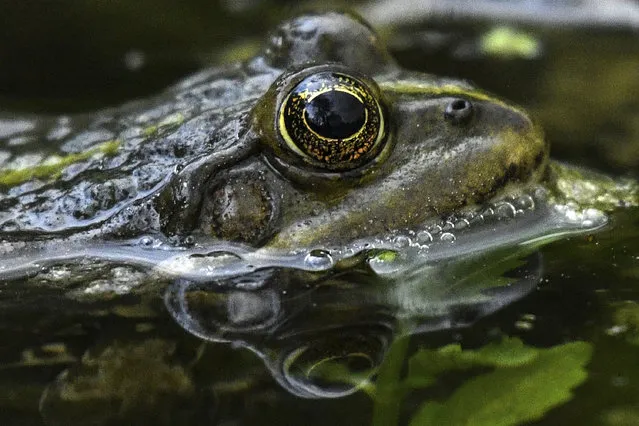
A frog swims in the water of a pond in a park in the outskirts of Moscow, Russia on May 27, 2020. (Photo by Kirill Kudryavtsev/AFP Photo)
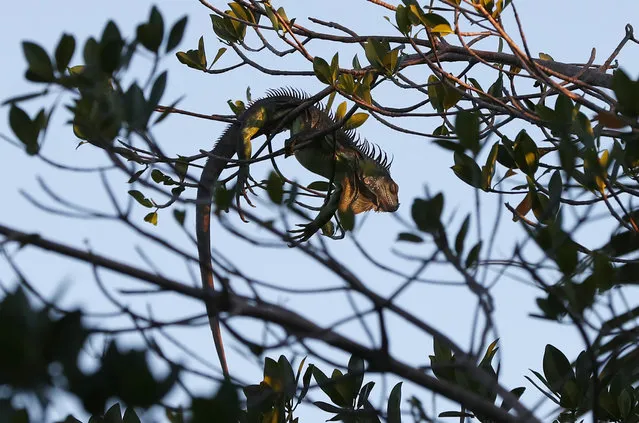
An iguana lies draped on a tree limb as it waits for the sunrise, Wednesday, January 22, 2020, in Surfside, Fla. The National Weather Service Miami posted Tuesday on its official Twitter that residents shouldn't be surprised if they see iguanas falling from trees as lows drop into the 30s and 40s. The low temperatures stun the invasive reptiles, but the iguanas won't necessarily die. That means many will wake up as temperatures rise Wednesday. (Photo by Wilfredo Lee/AP Photo)
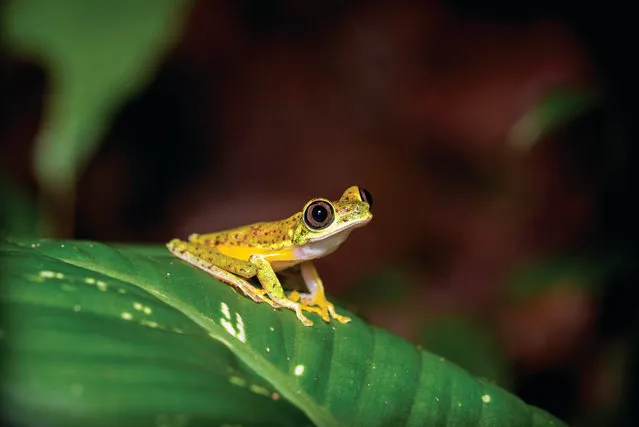
The lemur leaf frog, native of Costa Rica, is one of the key species that Bristol Zoological Society is working to protect, both in the wild and through conservation breeding programmes. (Photo by Adam Davis/Bristol Zoological Society)
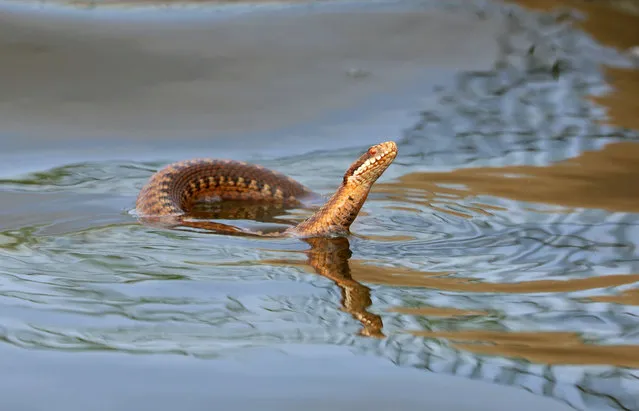
A rare sighting of an adder swimming in Norfolk’s Hickling Broad national nature reserve, England. It is perhaps trying to keep cool. (Photo by Lynne Warner/Norfolk Wildlife Trust)
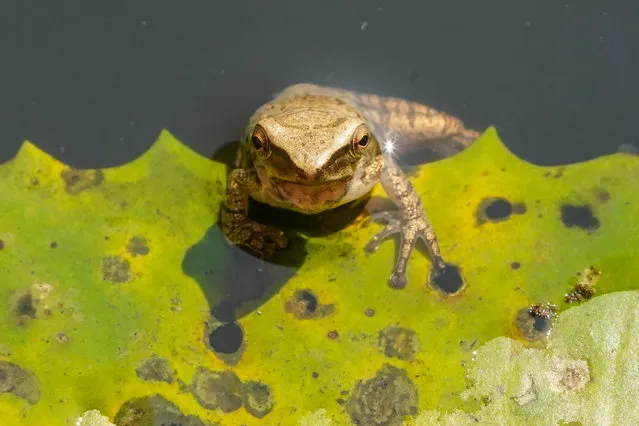
A golden tree frog rests on a leaf in Langkawi, Malaysia. (Photo by Graeme Green/The Guardian)
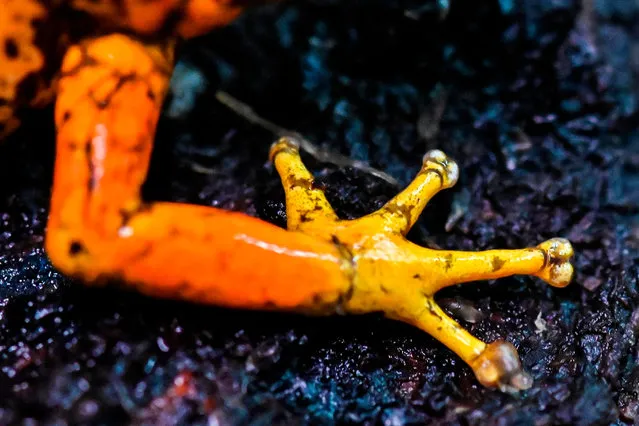
A leg of a “diablito” frog (Oophaga sylvatica) is photographed in a laboratory at a laboratory in the zoo of Cali, Colombia, on July 19, 2019. Colombia is the second country with the largest number of amphibians in the world after Brazil. More than 40% of amphibian species worldwide are in danger of extinction. (Photo by Luis Robayo/AFP Photo)
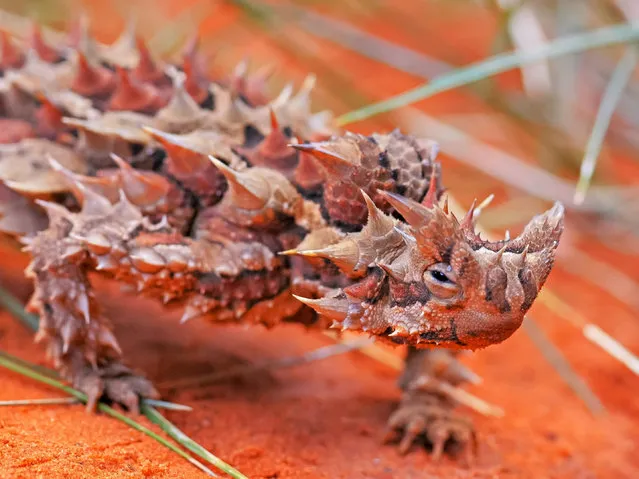
A thorny devil lizard from Australia’s Northern Territory. (Photo by Christopher Bellette/Alamy Stock Photo)
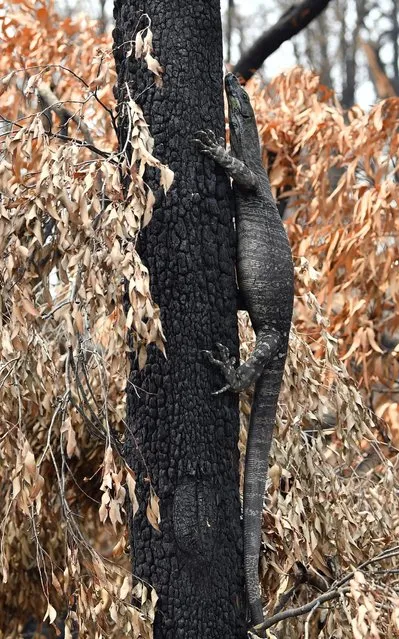
This photo taken on January 15, 2020 shows a goanna looking for food among the charred trees after a bushfire in Budgong area of New South Wales. The confirmed death toll rose to 28 on January 15, as the fires have already destroyed more than 2,000 homes and burnt 10 million hectares (100,000 square kilometres) of land – an area larger than South Korea or Portugal. (Photo by Saeed Khan/AFP Photo)
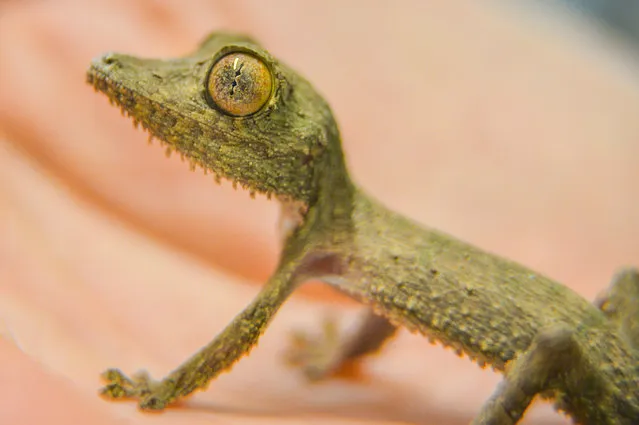
An as yet unnamed Henkel's leaf-tailed gecko, that has been born at Bristol Zoo Gardens on October 10, 2019. The gecko is the fourth one to be bred at the zoo in the past 12 months. (Photo by Ben Birchall/PA Images via Getty Images)
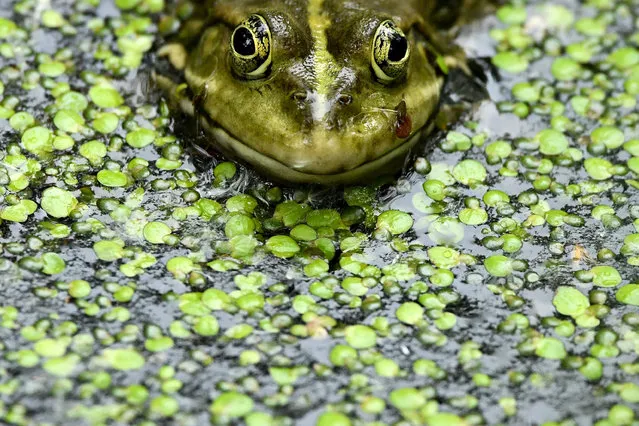
A frog is pictured in a pond in a park in Moscow, Russia on May 25, 2019. (Photo by Kirill Kudryavtsev/AFP Photo)
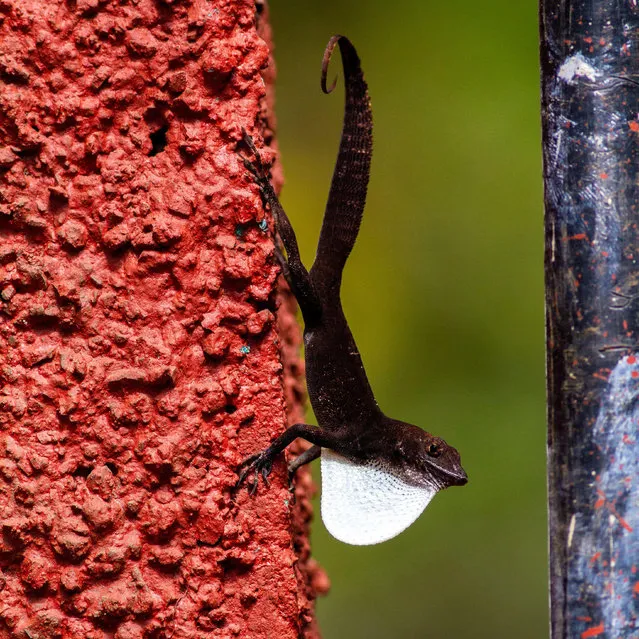
A Cuban white-fanned anole, Anolis homolechis, spreading its dewlap in courtship or territorially in Vinales, western Cuba. (Photo by Rebecca Cole/Alamy Stock Photo)
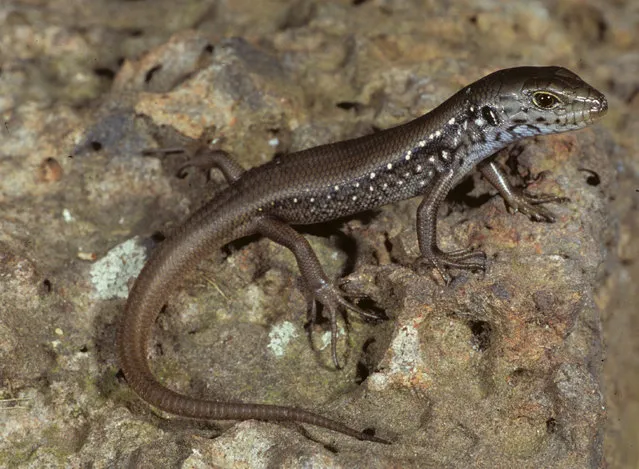
Mountain skink (Liopholis montana) in 2006 in Dargo High Plains in the Victorian alps, Australia. The hand-sized lizard lives in in the hilly regions that were badly hit by last summer’s bushfires. (Photo by Nick Clemann/The Guardian)

A dwarf siren salamander aglow with bioflourescence. Research suggests the ability to emit the flourescent glow after absorbing light energy may be widespread in amphibians including salamanders and frogs. (Photo by Jennifer Y. Lamb/Matthew P. Davis/PA Wire Press Association)
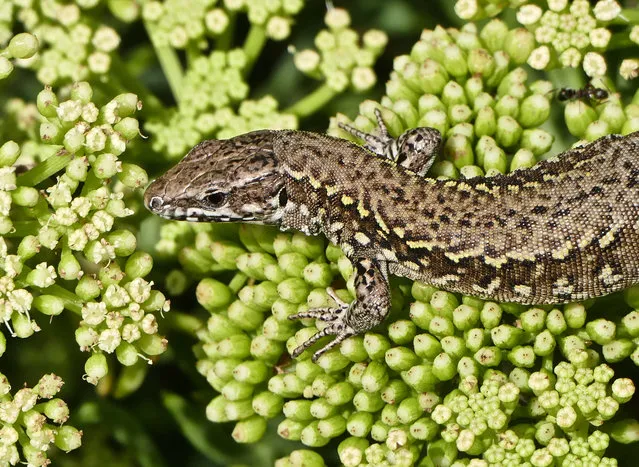
A sand lizard basking in the sunshine in Dorset, England on August 22, 2019. (Photo by Geoffrey Swaine/Rex Features/Shutterstock)

April Pulley Sayre’s newly released book, Being Frog, is about the fascinating lives of frogs. Sayre captured all of the photography featured in the book at her local pond and her enthusiasm for “frogtography” began in earnest in 2017. Since then, she has been enthralled with the practice of capturing glimpses of a frog’s life. (Photo by Courtesy of April Pulley Sayre/Simon & Schuster Children’s Publishing)
28 Nov 2020 00:03:00,
post received
0 comments
